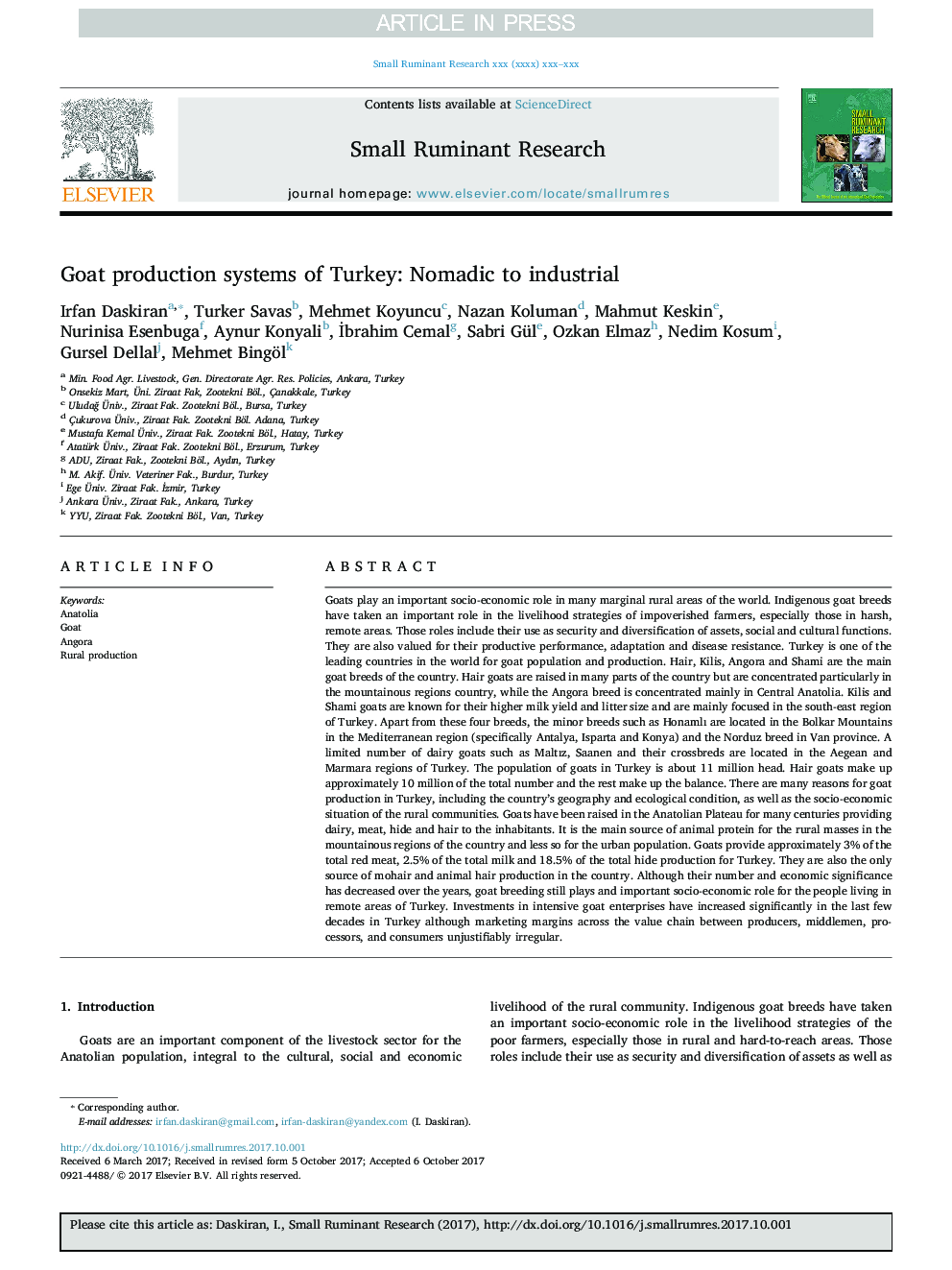| کد مقاله | کد نشریه | سال انتشار | مقاله انگلیسی | نسخه تمام متن |
|---|---|---|---|---|
| 8504179 | 1554329 | 2018 | 6 صفحه PDF | دانلود رایگان |
عنوان انگلیسی مقاله ISI
Goat production systems of Turkey: Nomadic to industrial
ترجمه فارسی عنوان
سیستم تولید بز از ترکیه: نوادیک به صنعت
دانلود مقاله + سفارش ترجمه
دانلود مقاله ISI انگلیسی
رایگان برای ایرانیان
کلمات کلیدی
آناتولی، بز انورا، تولید روستایی،
موضوعات مرتبط
علوم زیستی و بیوفناوری
علوم کشاورزی و بیولوژیک
علوم دامی و جانورشناسی
چکیده انگلیسی
Goats play an important socio-economic role in many marginal rural areas of the world. Indigenous goat breeds have taken an important role in the livelihood strategies of impoverished farmers, especially those in harsh, remote areas. Those roles include their use as security and diversification of assets, social and cultural functions. They are also valued for their productive performance, adaptation and disease resistance. Turkey is one of the leading countries in the world for goat population and production. Hair, Kilis, Angora and Shami are the main goat breeds of the country. Hair goats are raised in many parts of the country but are concentrated particularly in the mountainous regions country, while the Angora breed is concentrated mainly in Central Anatolia. Kilis and Shami goats are known for their higher milk yield and litter size and are mainly focused in the south-east region of Turkey. Apart from these four breeds, the minor breeds such as Honamlı are located in the Bolkar Mountains in the Mediterranean region (specifically Antalya, Isparta and Konya) and the Norduz breed in Van province. A limited number of dairy goats such as Maltız, Saanen and their crossbreds are located in the Aegean and Marmara regions of Turkey. The population of goats in Turkey is about 11 million head. Hair goats make up approximately 10 million of the total number and the rest make up the balance. There are many reasons for goat production in Turkey, including the country's geography and ecological condition, as well as the socio-economic situation of the rural communities. Goats have been raised in the Anatolian Plateau for many centuries providing dairy, meat, hide and hair to the inhabitants. It is the main source of animal protein for the rural masses in the mountainous regions of the country and less so for the urban population. Goats provide approximately 3% of the total red meat, 2.5% of the total milk and 18.5% of the total hide production for Turkey. They are also the only source of mohair and animal hair production in the country. Although their number and economic significance has decreased over the years, goat breeding still plays and important socio-economic role for the people living in remote areas of Turkey. Investments in intensive goat enterprises have increased significantly in the last few decades in Turkey although marketing margins across the value chain between producers, middlemen, processors, and consumers unjustifiably irregular.
ناشر
Database: Elsevier - ScienceDirect (ساینس دایرکت)
Journal: Small Ruminant Research - Volume 163, June 2018, Pages 15-20
Journal: Small Ruminant Research - Volume 163, June 2018, Pages 15-20
نویسندگان
Irfan Daskiran, Turker Savas, Mehmet Koyuncu, Nazan Koluman, Mahmut Keskin, Nurinisa Esenbuga, Aynur Konyali, Ä°brahim Cemal, Sabri Gül, Ozkan Elmaz, Nedim Kosum, Gursel Dellal, Mehmet Bingöl,
